District Profile
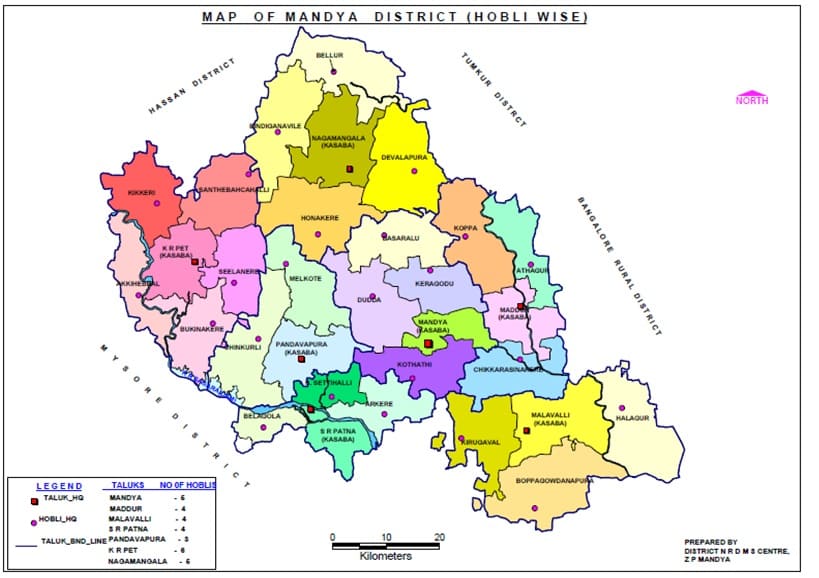
About Mandya
The Mandya district comprises of 7 taluks surrounded by Ramanagaram district in the east, Mysore in the west, Hassan and Tumkur in the north and Chamarajanagar in south. The river Cauvery enters the district from the west in Srirangapatna taluk and flows through Malavalli. The district is also benefited by tributaries of Cauvery viz. Hemavathi and Shimsha.
Taluks
- K R Pete
- Malavalli
- Maddur
- Mandya
- Nagamangala
- Pandavapura
- Sri Rangapatana
Infrastructure
The district is well connected with Railways and Roads and located between two fast growing cities- viz., Bangalore and Mysore. The district is having Zonal Agricultural Research Station, College of Agriculture and Krishi Vigyan Kendra at V.C.Farm. The district also has 5 working sugar factories. One product dairy, 2 Cocoon markets. One Tender coconut market and a major jaggery market. One medical college, Three engineering colleges are effectively working in the district.
District at a glance
Mandya is predominantly agrarian district located in the south of the state between 76019” and 770 20” E longitude and 120 13” and 130 04” N. latitude with an altitude of 2500 – 3000 ft. MSL. Mandya district is having several tourist and historically important places like Krishnaraja sagar, Ranganatittu & Kokkare Bellur bird sanctuaries, Srirangapatna Fort, Sri Ranganatha temple, Cheluvanarayana swamy and Yoganarasimha swamy temples with Ramanujacharya Dwaitha Peeth at Melukote.
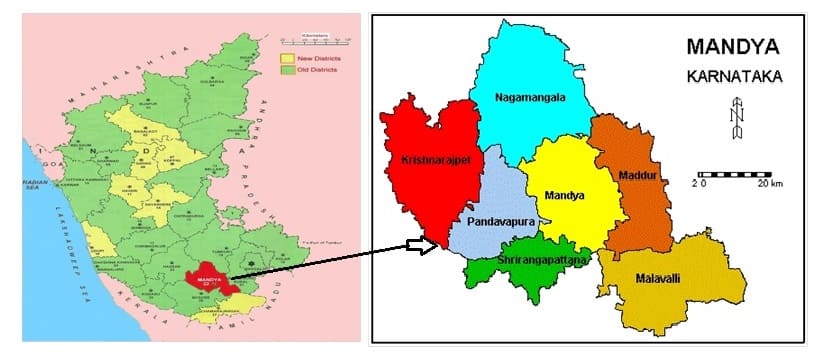
| Particulars | Particulars | ||
|---|---|---|---|
| Area (Sq. Kms) | 4961 | RSKs | 31 |
| Longitude | 760 45” to 780 24” | SHGs | 6214 |
| Latitude | 120 45” to 130 57” | Water Sources (ha.) | 140916 |
| MSL (mt.) | 706.29 | Canal (ha.) | 102806 |
| Taluks | 7 | Tank (ha.) | 21799 |
| Hoblis | 31 | Wells (ha.) | 8157 |
| Gram Panchayaths | 232 | Borewells (ha.) | 5002 |
| Villages | 1479 | Lift Irrigation (ha.) | 470 |
| Towns (Urban Agglomeration) | 3 | Others (ha.) | 2682 |
| Municipalities | 4 | Land holdings (ha.) | |
| Hamlets | 741 | Marginal (< 1 ha.) | 139990 |
| Population (Nos.) | 1763705 | Small (1 – 2 ha.) | 95418 |
| Rural Population (Nos.) | 1489483 | Semi Medium (2 – 4 ha.) | 63232 |
| Urban Population (Nos.) | 274222 | Medium ( 4 -10 ha.) | 22572 |
| Literacy (%) | 61 | Large (> 10 ha.) | 2848 |
The River Cauvery is the “Life line of the District” with scenic beauties and well known waterfalls
viz., Gaganachukki and Balamuri. The first Hydro electric power station in Asia was established in the
district during 1902 at Shivanasamudram.
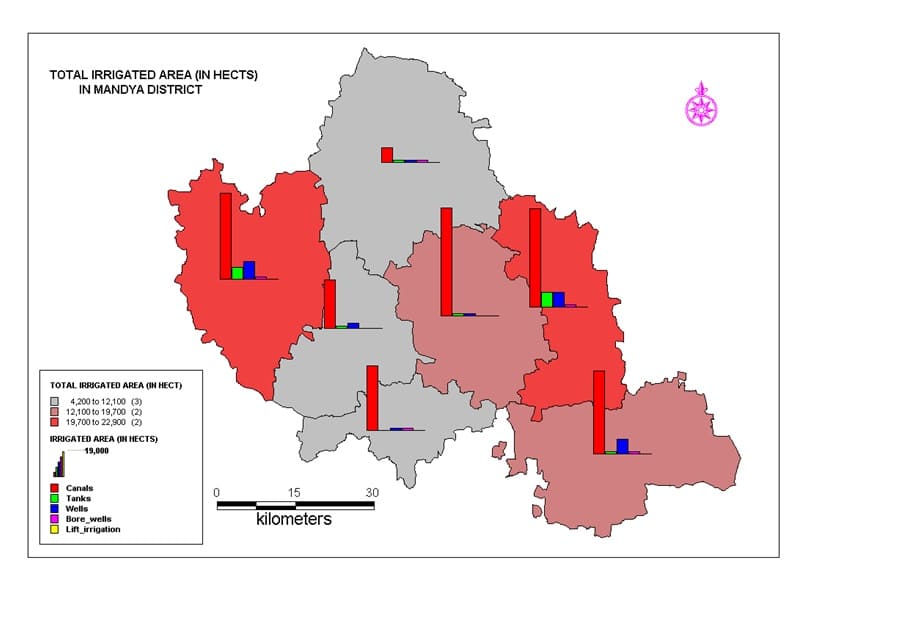
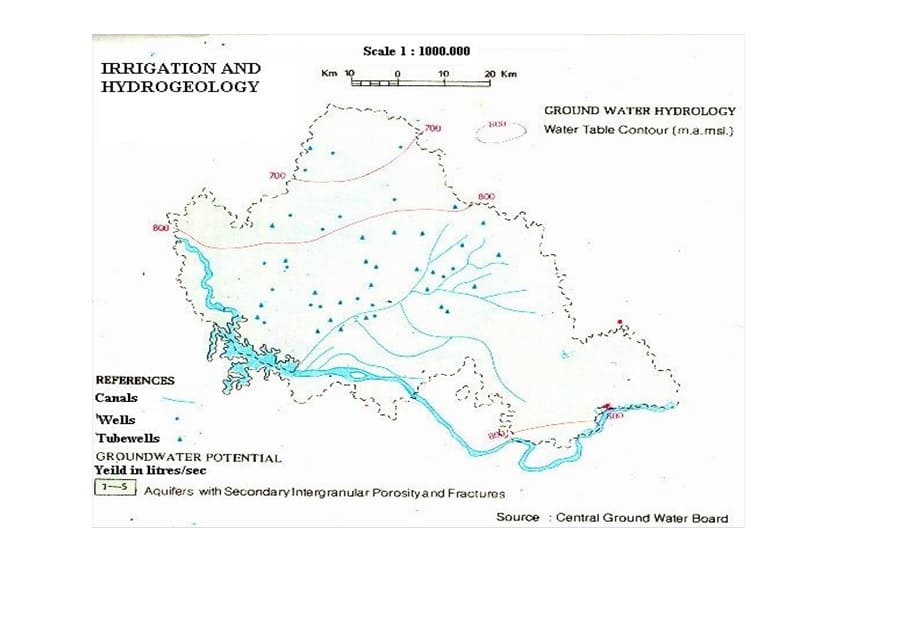
The ground water resources in Mandya indicates that, the most part of Malavalli taluk is under
critical, whereas K.R.Pete, part of Pandavapur, Srirangapatna and Maddur stands as over exploited and the
rest of area is in the safe zone.
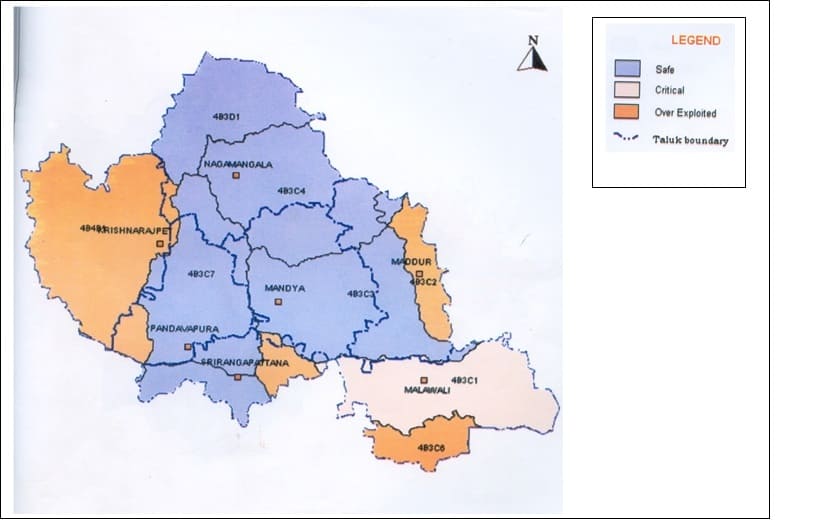
The total population of Mandya district as per the 2001 census is 17.64 Lakhs. The male population stands at 8.88 lakhs and the female at 8.76 lakhs. 84% of the population is living in rural areas. The female population is more in K.R.Pet, Nagamangala and Pandavapura.. Sex ratio of the district is 985. Scheduled Cast population in district is 2.07 lakhs and 0.14 lakhs is the Scheduled Tribes.
The district comes under Southern Dry Zone (Zone-6) with an annual average rainfall of 722 mm. Red sandy loam soil is predominant in the district.
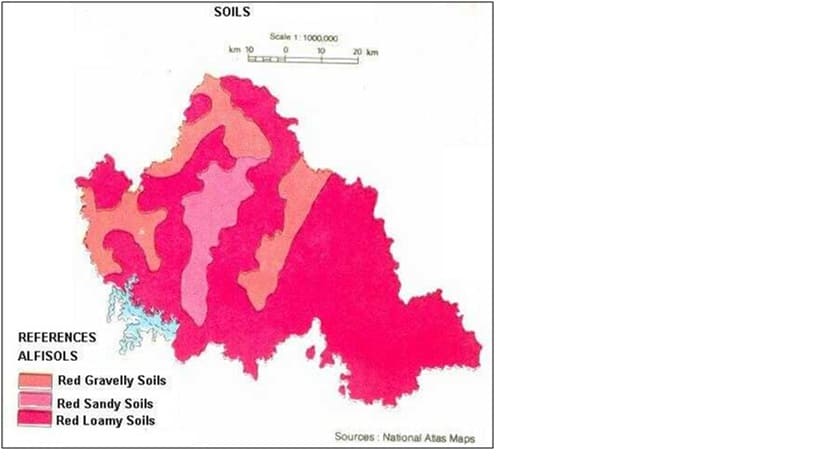
The net area sown in the district is 2.51 lakh ha. with 48% irrigation facilities. The district is having 82407 ha. uncultivable waste land and 24765 ha. under forests
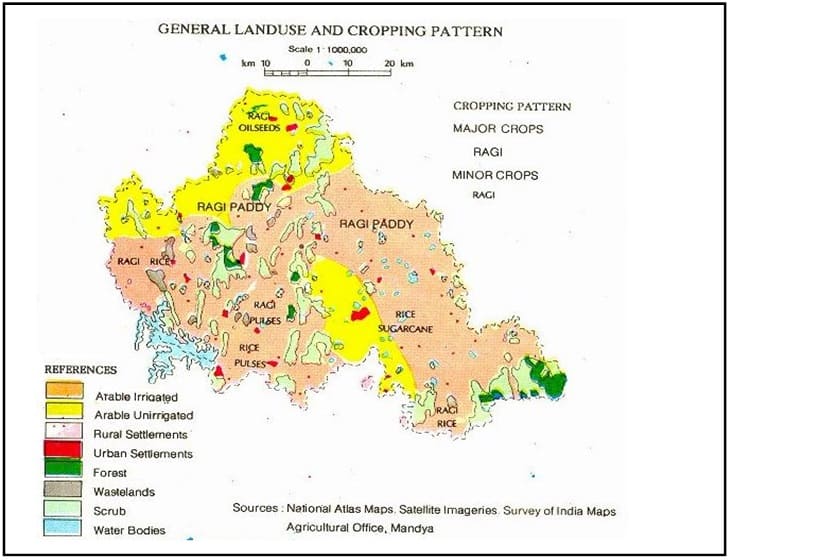
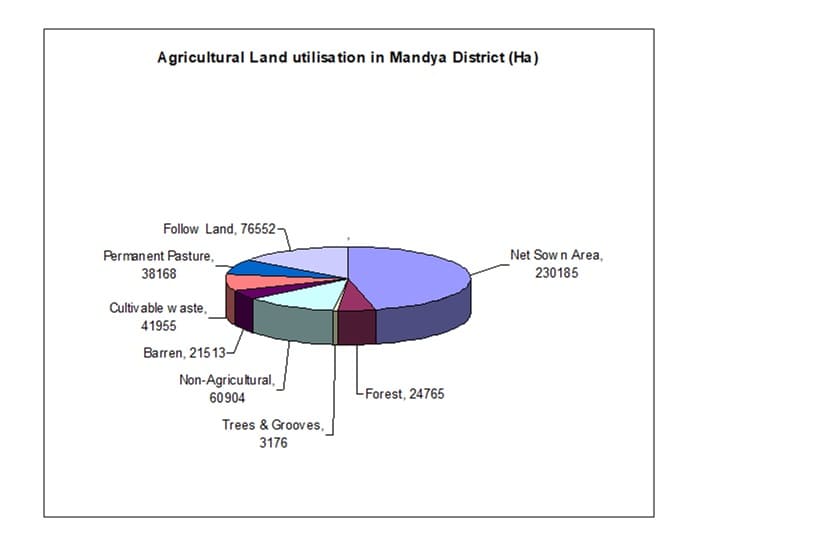
The Soil fertility status of Mandya in both rainfed and irrigated areas is similar in nature. The Organic carbon content is medium and phosphorus and potassium is high. The pH of the soil is generally neutral to saline (6.5 to 8.0).
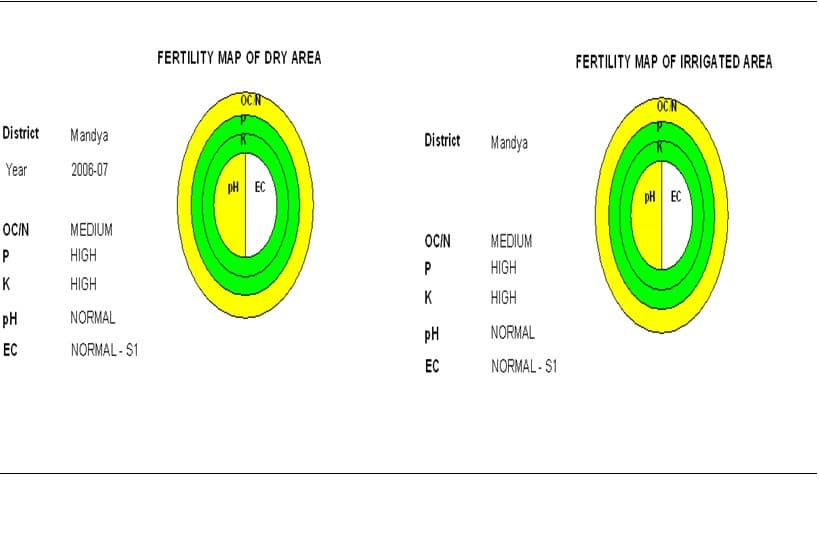
As Mandya District is having 48% of cultivated area under irrigation, which is having intensive agriculture activities majority with sugarcane and paddy. As a result there is a severe depletion of soil fertility without replenishing by addition of Organic manure. The Crops have been frequently exposed to severe depletion of Nitrogen, Phosphorous, Potassium. Zinc and Iron. Hence the productivity of the said crops reduces /stagnated over the year. Hence this problem needs to be addressed immediately to increase the production and productivity as per the following programmes.
1. Promotion of high Nitrogen fixing varieties of leguminous green manure crop like cowpea, Avare, Horsegram, susbania, Crotolaria and others.
2. Promotion of Vermi composting for better utilization of crop residues
1. Establishment of advanced centre for water management at Mandya with facilities for large scale demonstration and effective management of water through piped irrigation systems and micro irrigation system thereby also facilitate effective nutritive management with good soil health conditions.
2. Reclamation of problematic soils with CADA supported programmes in addition to encouraging suitable varieties/ Crop species tolerant to such soils.
3. Uneven distribution of water in command areas results in severe water deficiency at tail end regions. Can be solved by linking up of all the seasonal tanks through irrigated canals.
Rainfall Pattern:
Total average rainfall of the district is 737 mm with bimodal distribution. The maximum rainfall occurs in the months of May, September and October. Rainfall received during Pre-monsoon, Monsoon and Post-monsoon season is 22 %, 47% and 30% respectively.
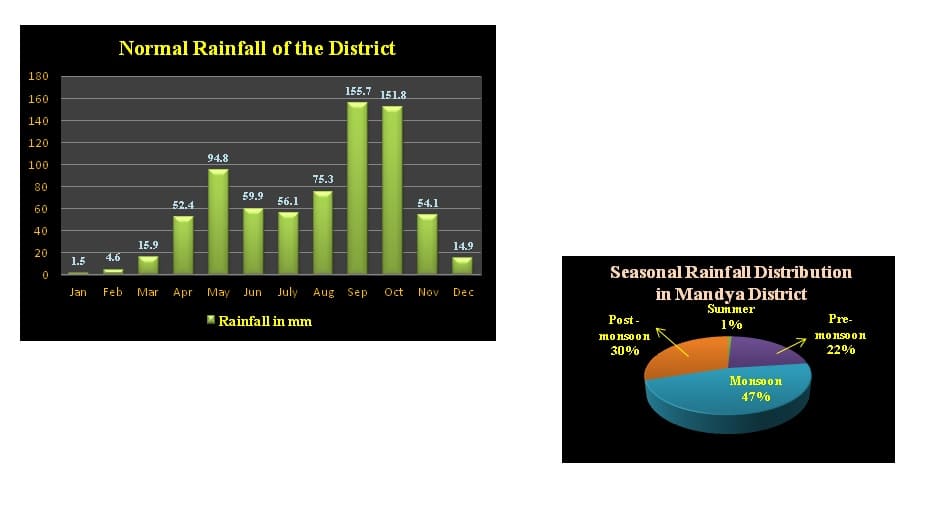
The total number of operational land holdings is 4.92 lakhs with an average size of land holding of 0.64 ha. which is far below the economic size of 2.56 ha. Small and marginal farmers account for 92% of the total holdings cultivating 78% of the total cultivated area.
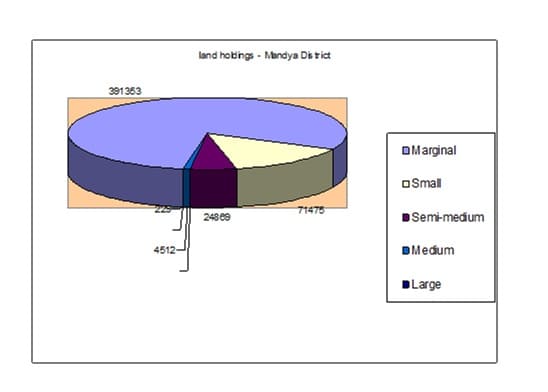
The Mandya District represents rainfed and irrigated eco-system with 48% irrigated area. The major source of irrigation is Cauvery and Hemavathi reservoirs. The irrigated region is Concentrated in Srirangapatna, Pandavapura, Mandya, Maddur and Malavalli taluks. As per the availability of irrigation sources the district can be classified into 3 growth regions
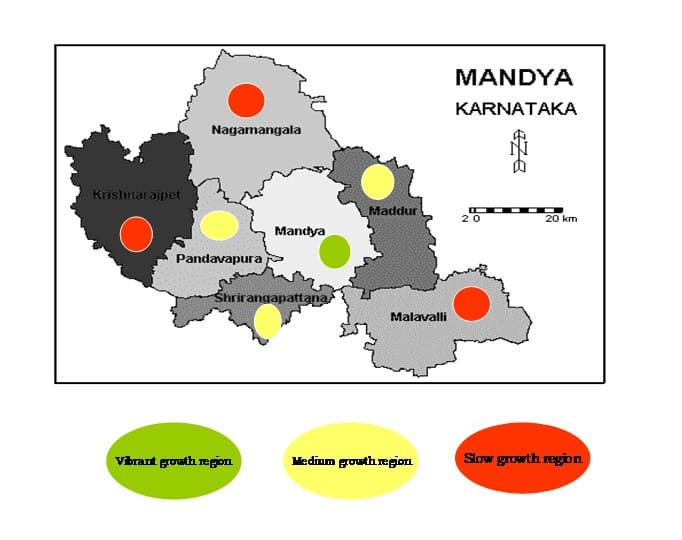
The total cultivated area of agricultural crops in the district is about 2.51 lakh ha. The area under different agricultural crops indicated that the rice is grown in 80000 ha. and Sugarcane in 25000 to 40000 ha. The Ragi in rainfed areas occupies 72000 ha. The area under maize is increasing over the years in tail end regions replacing groundnut the normal pulse area in the district is 24000 ha. The food grain production during 10th plan in the district varied 2.1 lakh ton to 4.6 lakh ton. The food grain production affected due to drought occurred in the year 2002-03 and 2003-04. The area and production of sugarcane also fluctuated due to less availability of irrigation water during drought period.
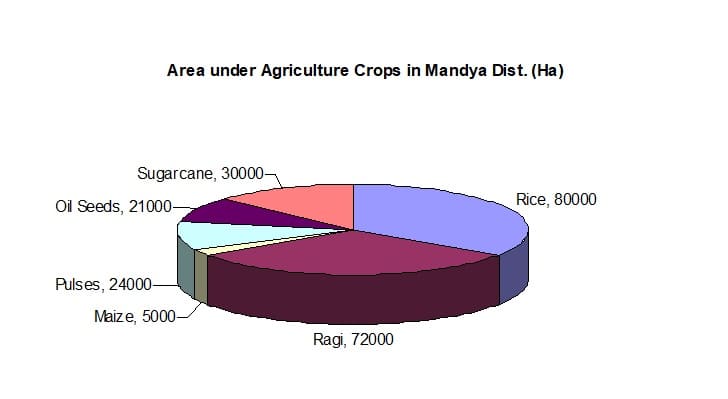

There is huge yield gap in all the major crops of the district due to many constraints. The crop wise constraint analysis is given below
Participatory seed production program involving ZARS/SHG NGO/KSSC
Operation research project on crop diversification in Hemavathi command area-ZARS.
Research on Scientific jaggery production processing & Marketing.
LSD/FLD on IFS in rainfed areas.
Intensification of forage production- Seed production.
Enrichment of soil fertility through green manure / Bio- fertilizer / Enriched compost/ Micro nutrient.
Agro processing & value addition at village level
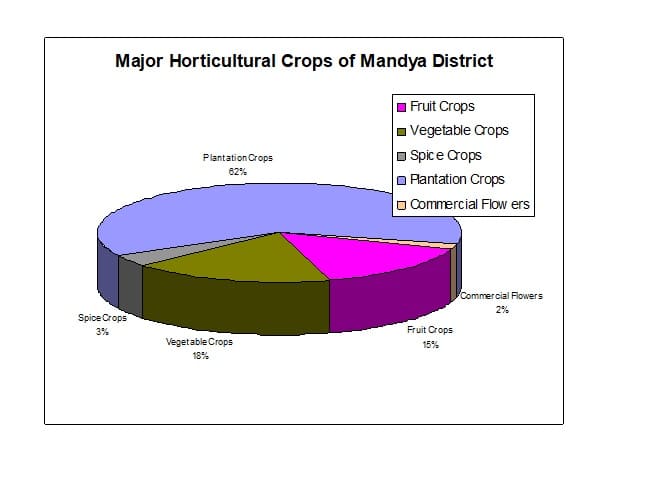
Mandya district has potential to become major destination for horticulture crops production and processing in terms of both dry land horticulture with fruit crops and intensive cultivation of high value crops in irrigated areas of the district. In rainfed areas Mango, grapes, jack, Amla, wood apple, Tamarind, Cashew, Guava, Sapota could be promoted in semi-irrigated taluks. Similarly irrigated areas have potential to grow flowers and vegetable crops apart from seed production.
Coconut is the major horticulture crops covering about 40000 ha. followed by mango and banana in 5000 ha and 7000 ha. respectively. Tomato, Brinjal, Bhendi and green chilies constitute vegetables with their combined area around 5000 ha. The existing total area of various horticulture is shown Annexure-5.21 there is immense scope for area expansion both under irrigation as well as in rainfed areas.
Major thrust is given for area expansion under Mango, Jack fruit, Guava, Sapota and Amla Crops in rainfed areas of Malavalli, K.R.Pet, and Nagamangala, Pandavapura along with watershed programs.
In irrigated areas Banana and intensive vegetable cultivation of Tomato, Brinjal, Bhendi is planned to boost the production and productivity to catch the nearby market.